Overview and Objective
In this lesson, students will explore the famous billiard table problems by analyzing patterns and creating visual representations. They will investigate the relationship between the billiard ball's path on an idealized (no friction) pool table and the table's dimensions.
Additionally, students will explore the number of squares the ball traverses and the number of rebounds it makes in relation to the least common multiple and the greatest common factor of the dimensions of the table.
Desmos Classroom Link
Warm-Up
Use this canvas to show students the diagrams and explain the problem.
Think of a pool (billiard) table with four pockets at each corner (A, B, C, D).
You set a cue ball from vertex A and shoot it at a 45-degree angle across the table, by the law of reflection, it rebounds with the same angle.
Assume there is no friction and the ball never stops until it drops into one of the corner pockets,
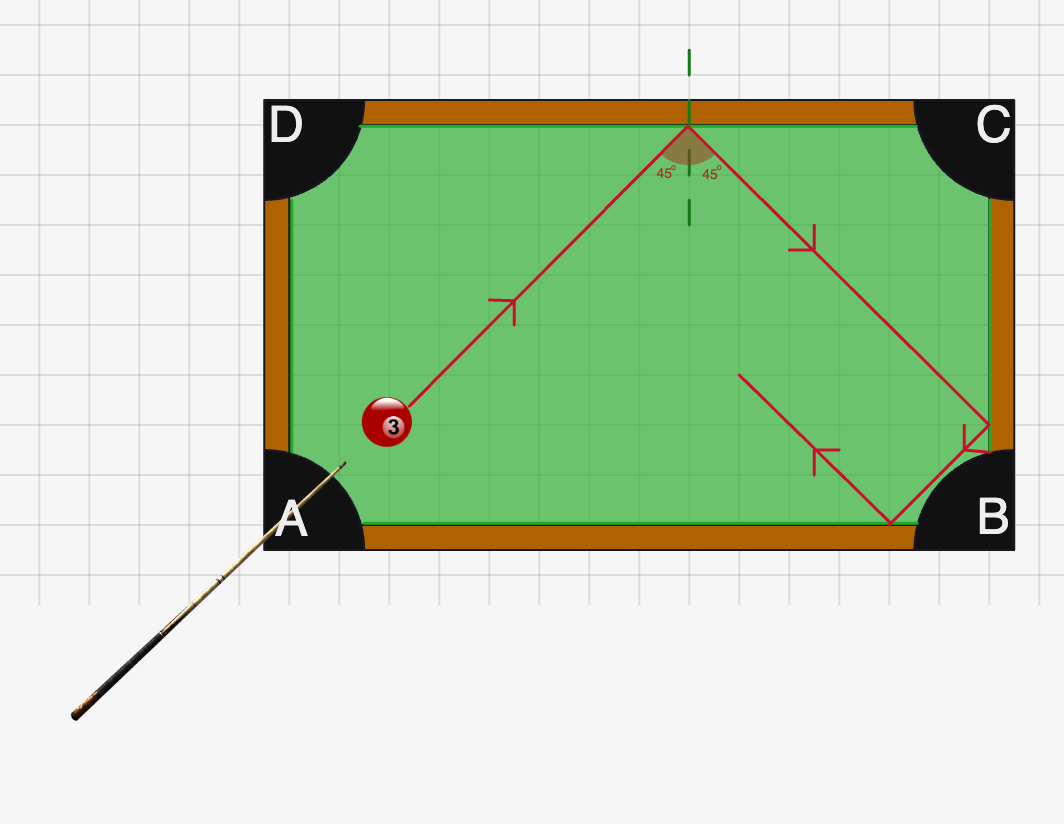

The square grid is shown in the background to enable students to draw the 90 degree turns at each hit. Invite them to draw the path to explore what corner (pocket) the ball will end up in each case?
Here are the drawings:

Discuss with students what affects the position of the pocket where the ball ends up. They probably see it is directly related to the dimensions of the pool table. Ask students what they wonder now. Let them share their observations on the complexity of different routes.
Let them come up with the problem as "for an n x m table, how can we know which pockets the billiard ball ends up in?" They might also come up with the questions like the number of hits (rebounds) or the number of squares on the path (the length of the path).
Main Activity
When the dimensions of the table are given, can you predict the final destination of the ball?
You may want to group the students and remind them to try out this problem with different sizes of tables. A systematic approach can help as always. Give them some time to work on the problem.
Share some student work with the class. Invite students to talk about their observations
Students might start to realize for an n x m table,
- if both n and m are odd numbers, the billiard ball goes to pocket C.
- if n is odd and m is even, the ball goes to pocket B.
- if n is even and m is odd, the ball goes to pocket D.
Ask them about the case of having both n and m as even? This case seems more complicated since the answer varies all the time. If they did not already, you might ask them to observe the cases like "2 x 3, 4 x 6, and 8x 12" or "6 x 10 and 10 x 14".
In this example, the destination pocket is the same. Let them think these dimensions as fractions:
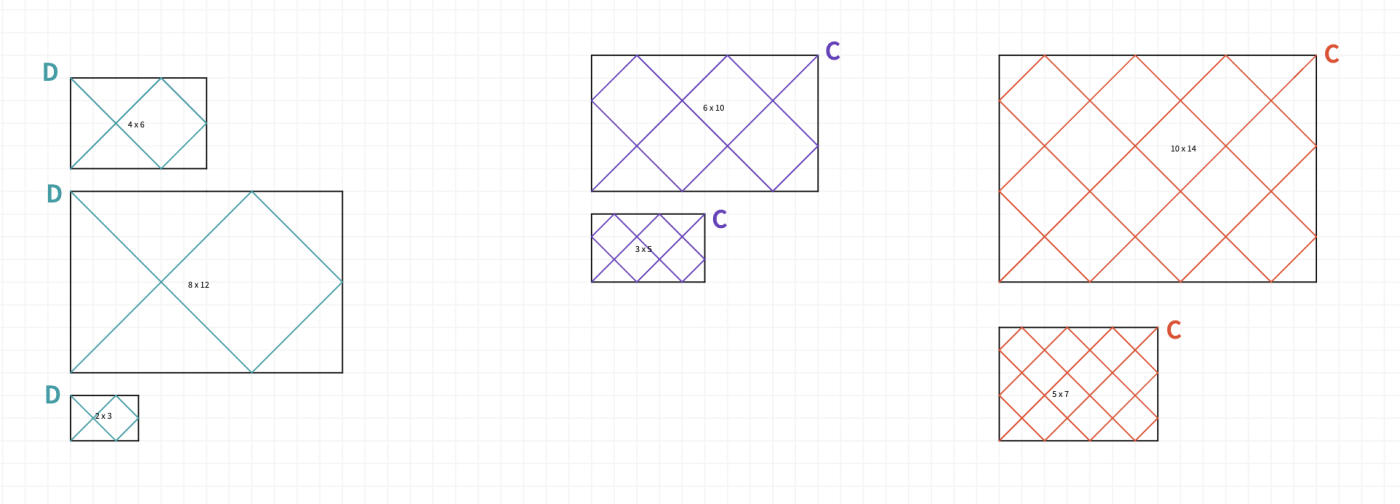
The ball moves along the same path that it moves in the simplest form of the dimensions.
In the first set, the ball ends up in D. Since the simplest form is 2 by 3, The problem turns to the even by odd case.
In the second set, the ball ends up in C, since the simplest forms became odd by odd cases.
It is like playing the same game in a scaled-down model of the same table.
Making these observations can take time and longer class discussions. To clarify their observations and generalizations, ask them to predict what happens in a table of
- 25 x 30
- 42 x 50
- 17 x 19
- 100 x 300
Now, you may ask that why does parity determine the final pocket of the billiard balls?
First approach
You may suggest coloring the grid points alternatively in different sizes grids. Here is an example:
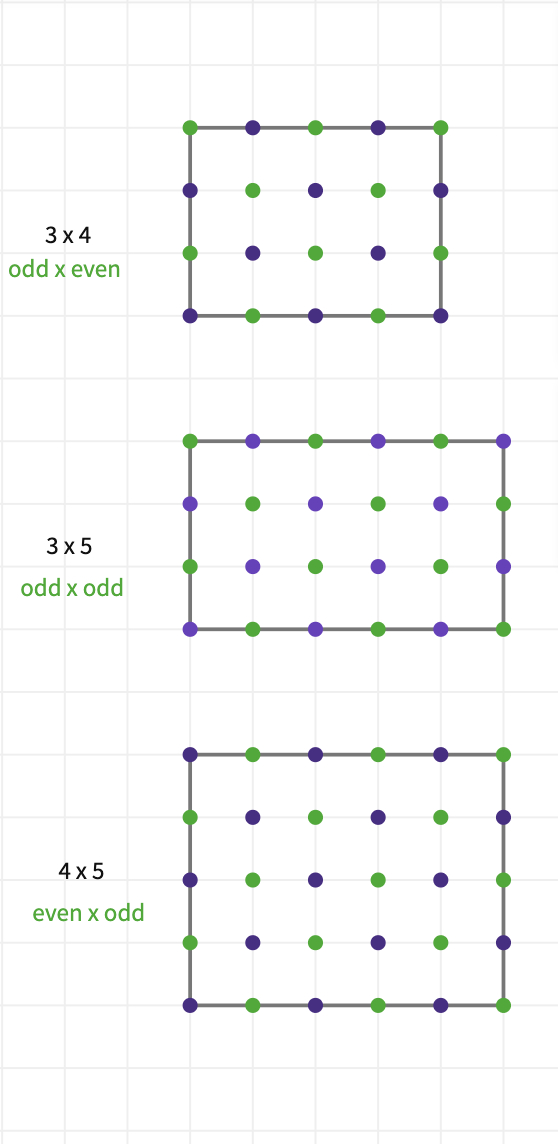
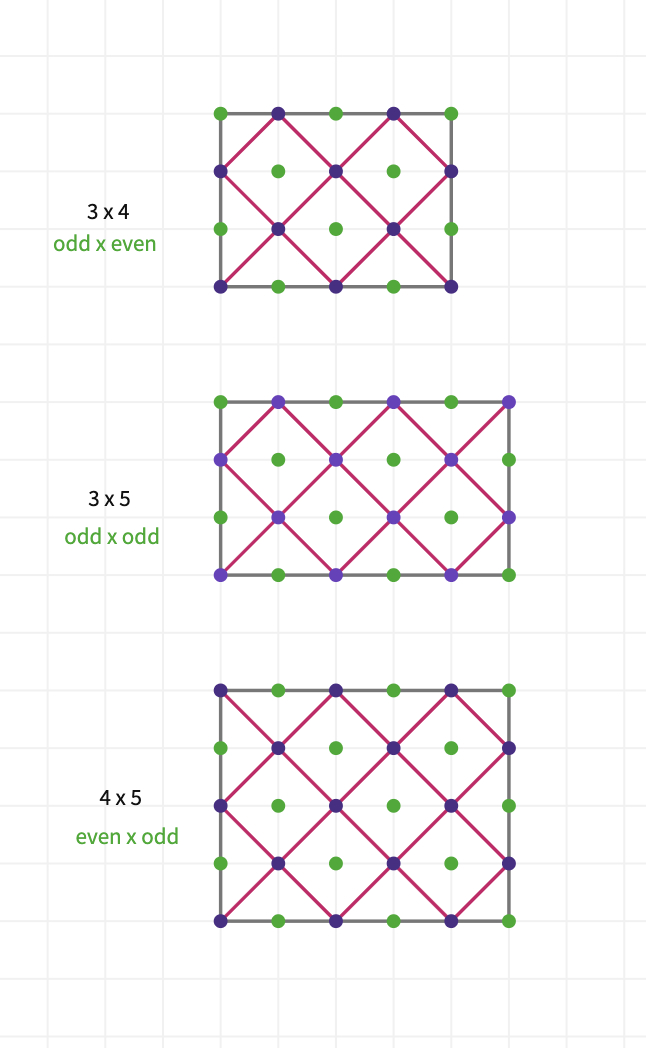
Ask students if the path the billiard ball changes from purple points to green points.
Since it does not, we only need to figure out which of the four corners will be the same color as the bottom left corner. And that only depends on the parity of the dimensions of the table!
Second Approach
What happens if we scale up the size of the table instead of scaling down in the previous approach? Ask students to add the same size tables as many as needed to create a straight path for the ball to reach one of the end pockets. Here, the important point is each added table is the mirror image of the previous table.
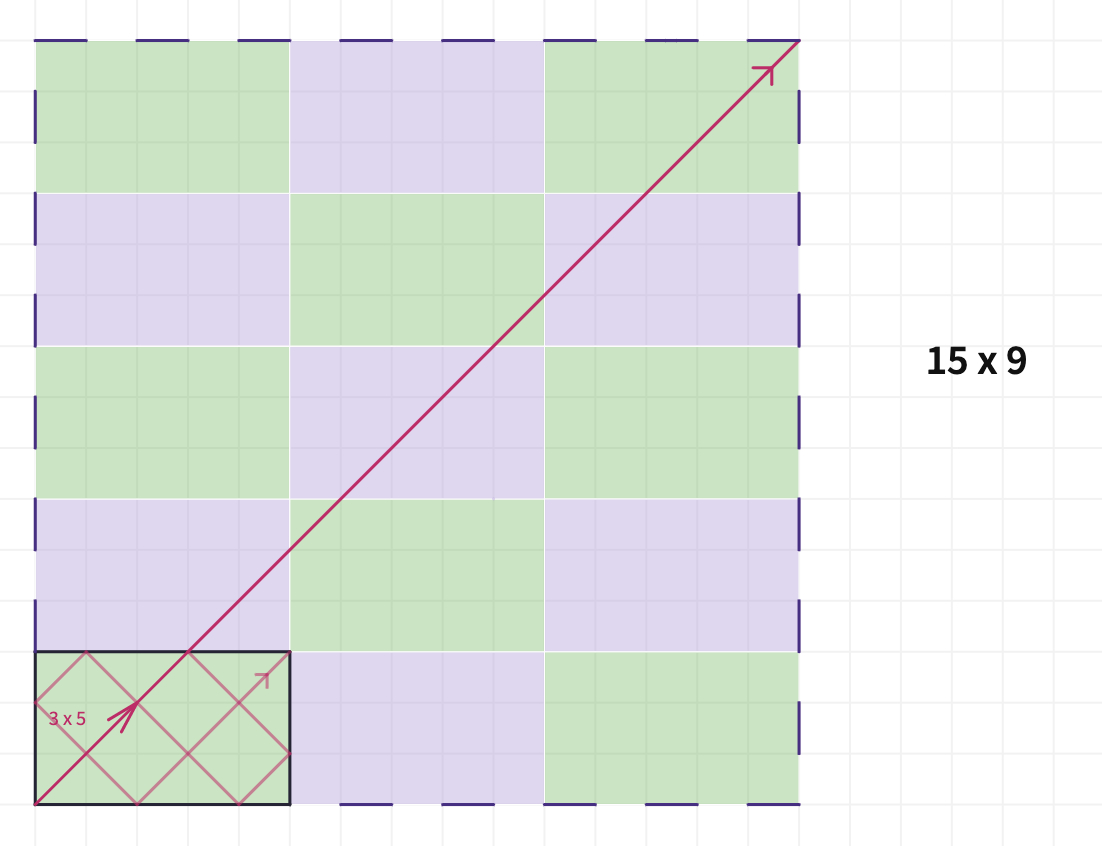
So, when the cue ball comes close to the end of the table, it passes through a mirror instead of bouncing off. Let's have a look at 2 by 3 example to understand the idea better.
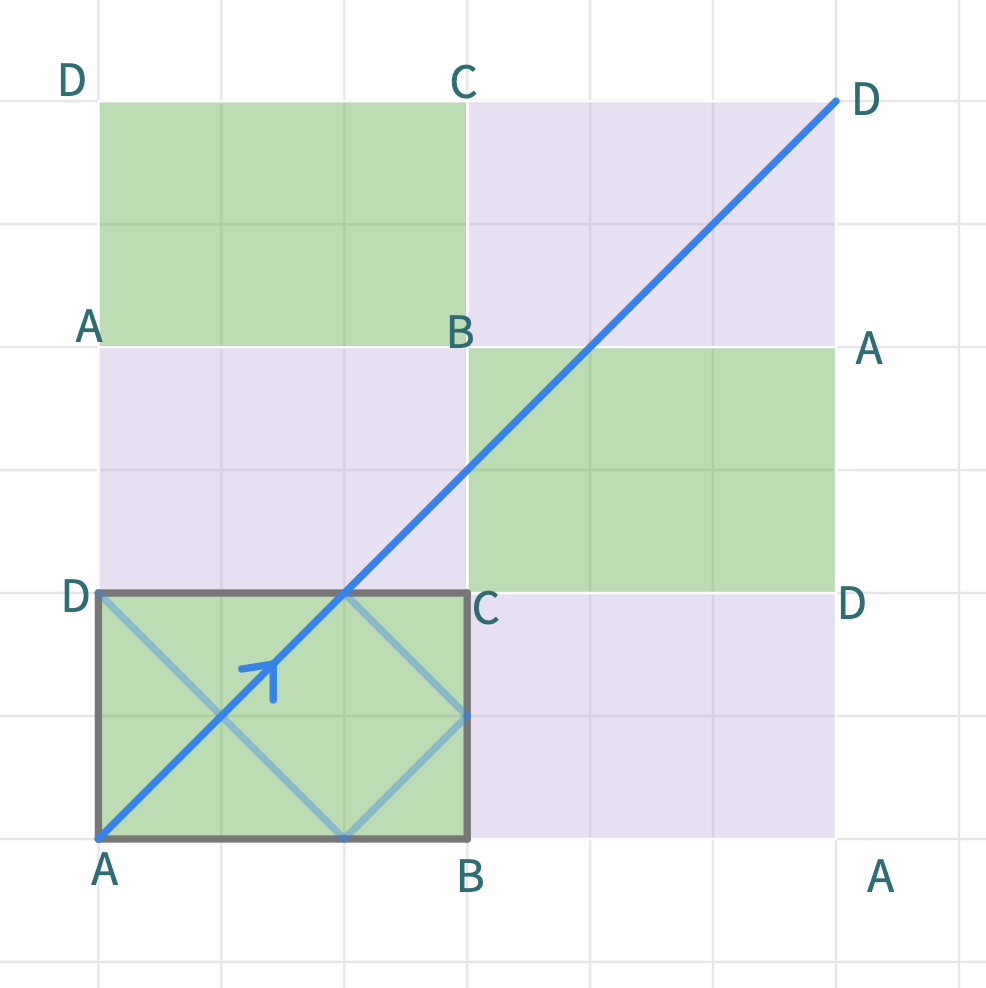
Ask students why this approach works.
Look for effective strategies like simplifying fractions helped us solve the curious case of even x even tables, now enlarging fractions help us to reason why.
Students may start using the least common multiple concept to find how many tables you had to stack to the right and how many you had to stack up.
Closure
To close the lesson, discuss that
- Can the ball fall back into the starting pocket?
- If one of the two given numbers is a multiple of the other, what is the shape of the arithmetic billiard path?
- For which numbers do the arithmetic billiard path end in the corner opposite to the starting point?
Like an exit ticket, you may share this canvas to ask if the billiard ball always falls into a pocket.
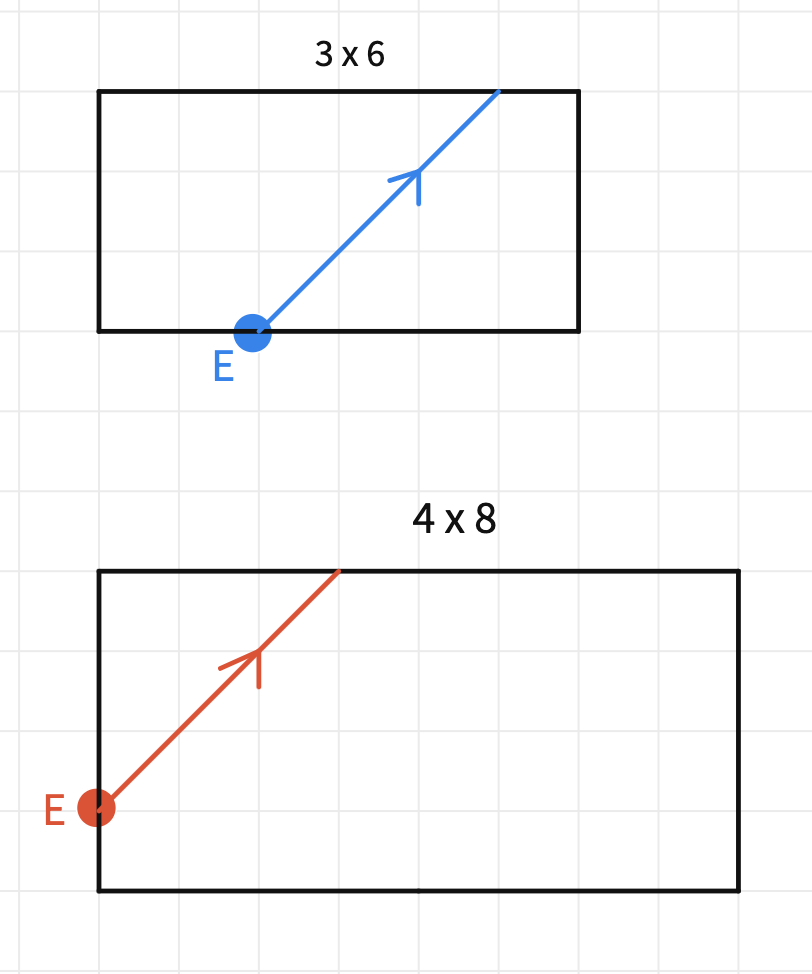

These loops can be pretty surprising for the students. Let them think of other examples where the ball starts at any grid point of an m x n pool table.
Explore more
In the beginning of this exploration, students were asked to come up with their own questions about the pool table. If these questions did not already come naturally, consider asking
- Determine the formula for the number of cells traversed by the ball in an n x m table.
The number of cells that the ball travels until it ends up in a pocket is the least common multiple of m and n (LCM (n,m)). When m and n are relatively prime (GCF (n,m) = 1), then the number of squares that the ball traverses is m x n.
- Determine the actual length of the path.
Using the Pythagoras theorem, since each unit square diagonal is √2 unit length, one can multiply LCM with √2 to come up with the actual length of the path.
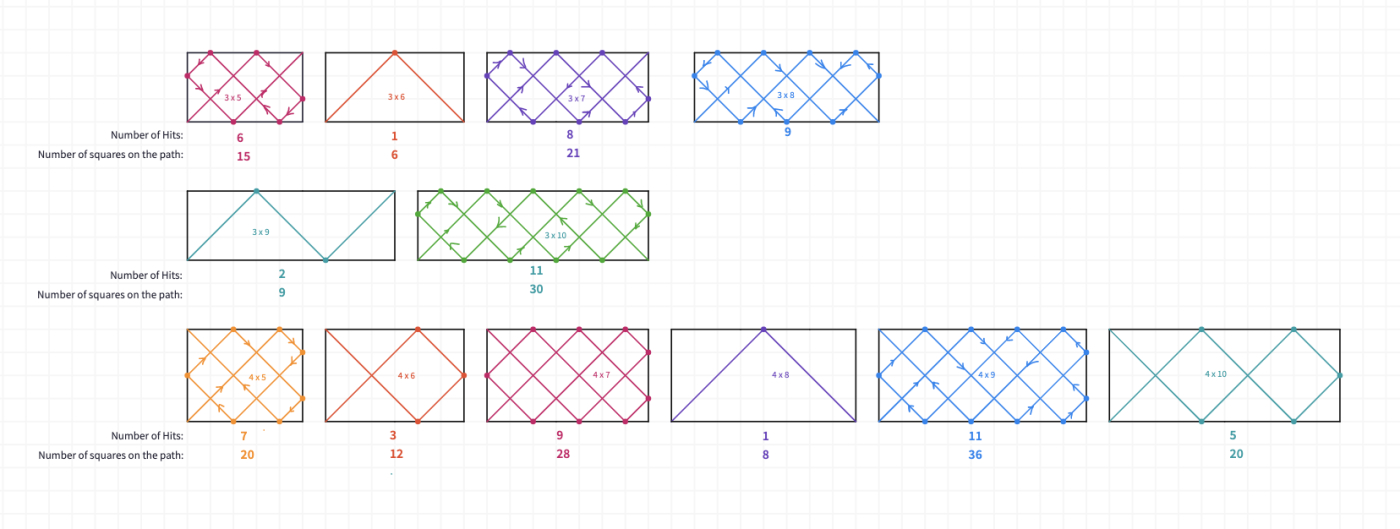
- Determine the number of hits of a ball before it ends up in a pocket.
The formula for the total number of hits in an m x n table with GCF(m,n) = 1, is .
Polypads for This Lesson
To assign these to your classes in Mathigon, save a copy to your Mathigon account. Click here to learn how to share Polypads with students and how to view their work.